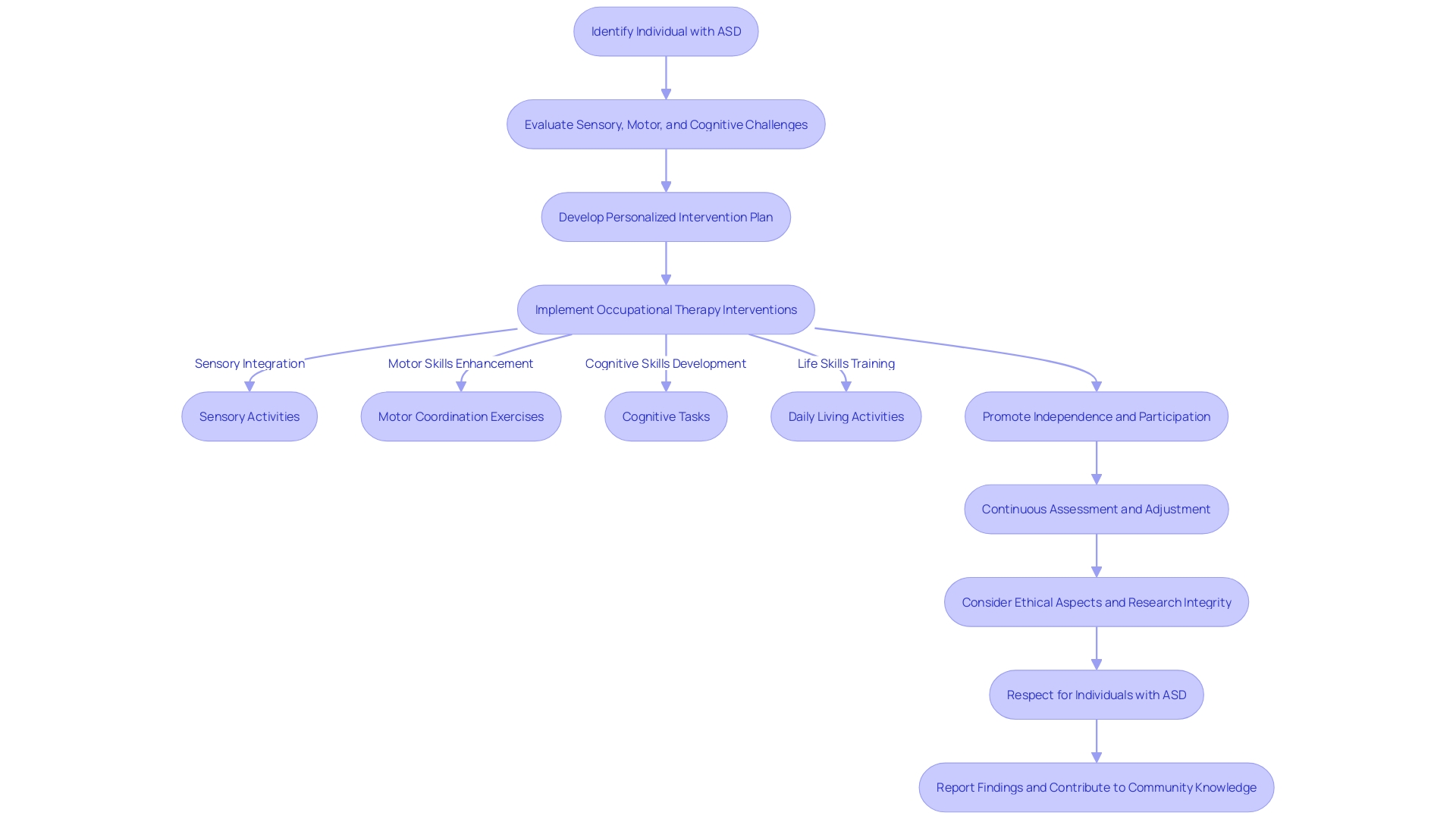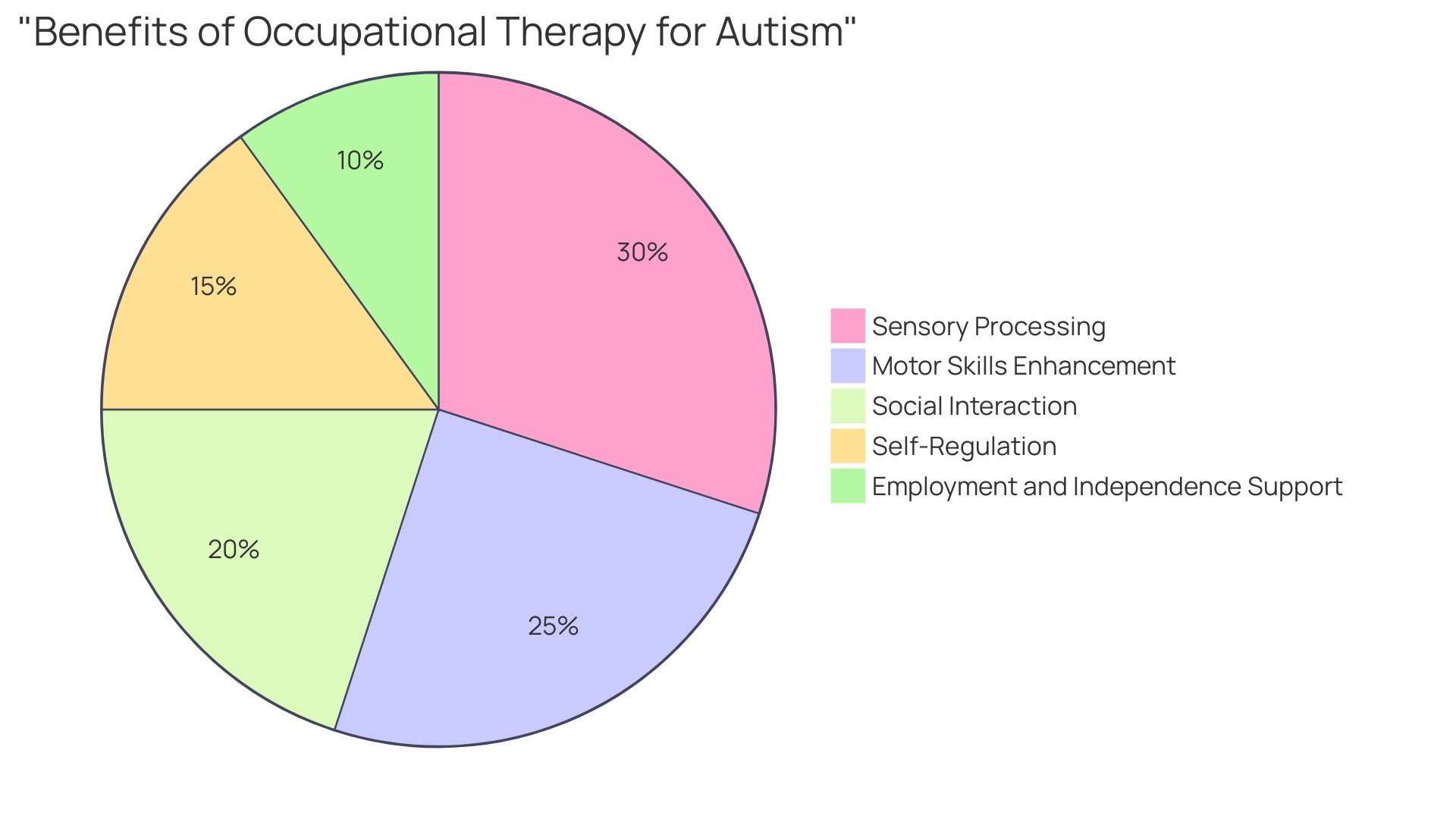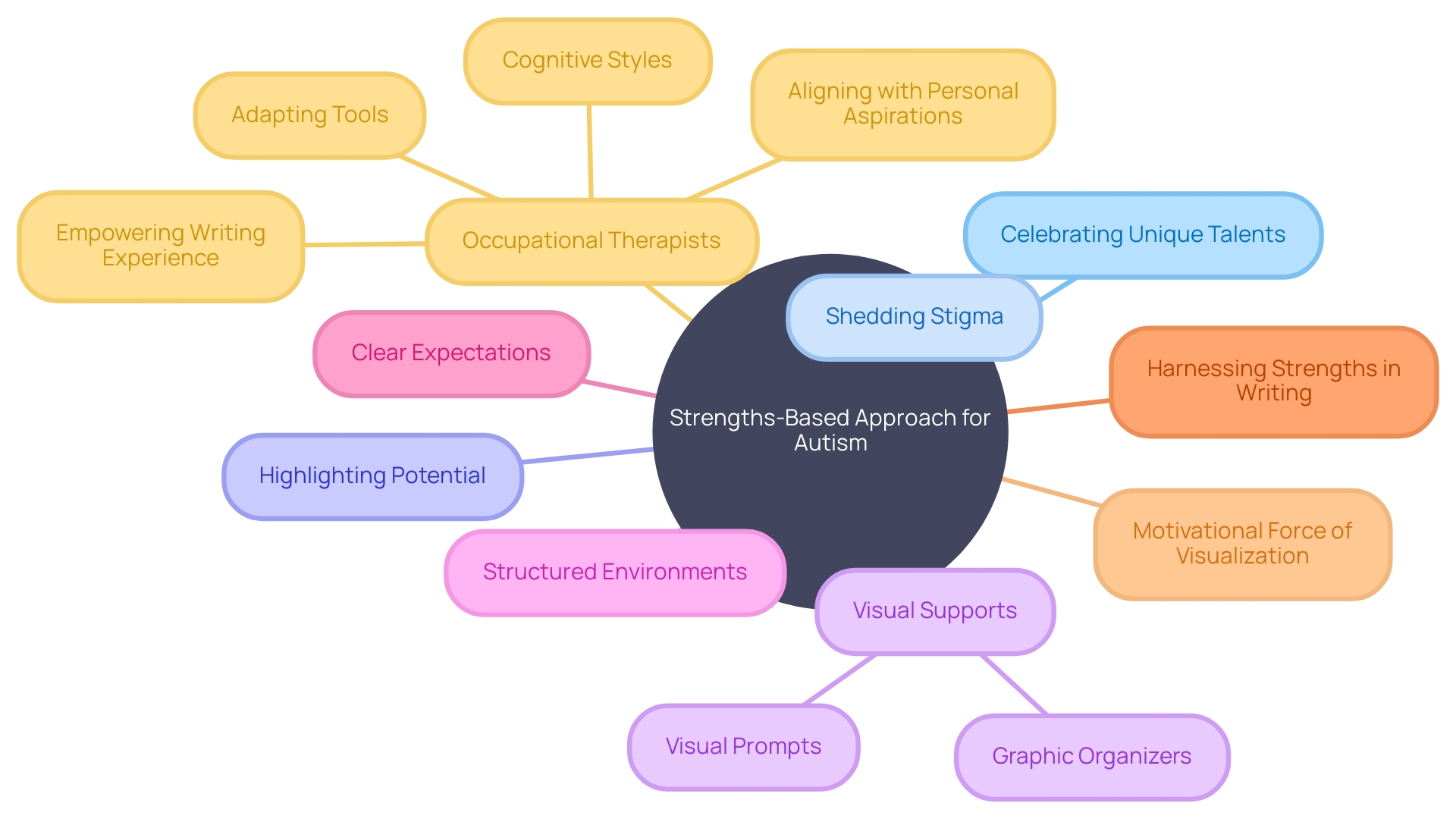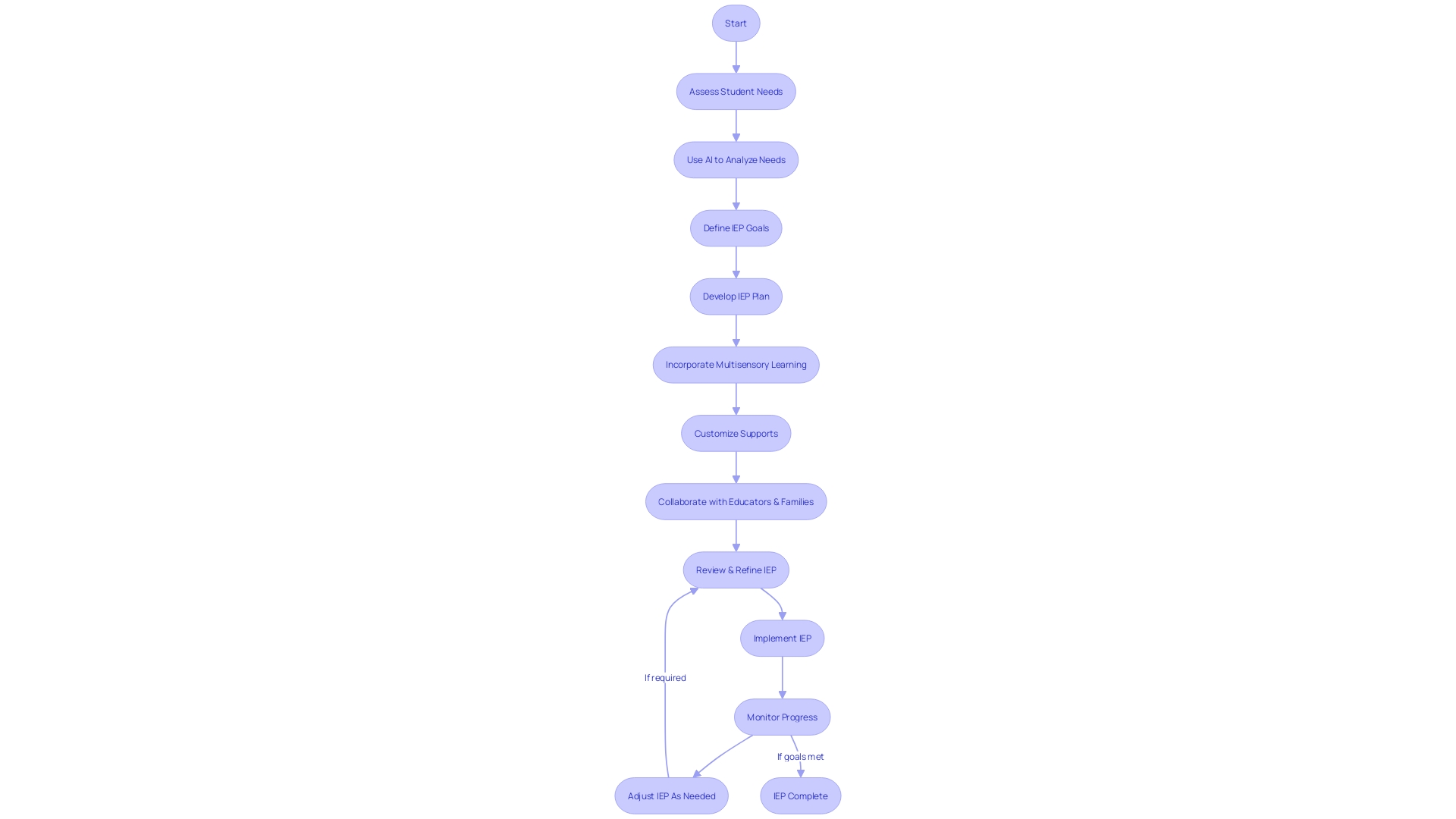Introduction
Occupational therapy plays a crucial role in supporting individuals with Autism Spectrum Disorder (ASD) as they navigate daily life. This therapeutic approach focuses on enhancing essential life skills, promoting independence, and enabling participation in everyday activities.
Occupational therapists address the unique sensory, motor, and cognitive challenges faced by individuals with ASD, fostering meaningful engagement with the world around them. However, research on nonpharmacological interventions like occupational therapy has faced criticism, highlighting the need for rigorous evaluation to ensure effectiveness and ethical practices.
In this article, we will explore the benefits of occupational therapy for autism, common interventions used, and the use of tools like social stories and visual supports to empower individuals with autism. We will also delve into personalized approaches to writing instruction and the creation of structured environments to enhance the educational experience for students with autism. By providing guidance and resources, this article aims to empower parents and advocates in supporting the well-being of their children on the autism spectrum.
The Role of Occupational Therapy in Autism Spectrum Disorder Treatment
Occupational therapy is a cornerstone in supporting individuals with Autism Spectrum Disorder (ASD) as they navigate the complexities of daily life. This therapeutic approach is dedicated to enhancing essential life skills, promoting a sense of independence, and enabling participation in everyday activities. Central to this process is addressing the unique sensory, motor, and cognitive challenges that individuals with ASD may encounter.
By focusing on these areas, occupational therapists are not just facilitating routine tasks but are fostering meaningful engagement with the world around them. Nonetheless, it's important to note that research in non pharmacological interventions such as occupational therapy has encountered criticism. Studies often exhibit design flaws that obscure the true effectiveness, potential risks, and the overall impact of these interventions.
This calls for a rigorous evaluation to ensure that the practices adopted are genuinely beneficial and respectful towards the autistic community. As highlighted by both researchers and members of the autistic community, there is a significant need for improvements in the quality and reporting of intervention research. Their advocacy underscores a broader demand for research that upholds the dignity and rights of individuals with ASD, ensuring that interventions are not only effective but also ethically sound.

Benefits of Occupational Therapy for Autism
Occupational therapy (OT) stands as a beacon of progress for those on the autism spectrum, offering more than just treatment—it provides a path to a more fulfilling life. With an estimated 1 in 70 individuals being autistic, the impact of OT is profound.
It meticulously hones sensory processing capabilities, enhances motor skills, and nurtures self-regulation and social interaction. These therapists don't just apply interventions haphazardly; they wield the latest evidence-based strategies like artists, sculpting each therapy session to the individual's unique needs.
This is crucial as only 3 in 10 autistic individuals find themselves employed, highlighting the need for tailored support to bridge the gap to the working world. Furthermore, considering that autistic individuals experience a significant pay disparity, earning a third less on average, the role of OT in fostering employability and independence becomes even more critical. By focusing on specific challenges, OT empowers individuals with autism to navigate life's myriad aspects with confidence and competence.

Common Occupational Therapy Interventions for Autism
Occupational therapy is a critical component in supporting individuals with autism, focusing on enhancing their ability to process sensory information and engage in social interactions. Sensory integration therapy is a cornerstone of this approach, assisting in the modulation of sensory experiences, which can be overwhelming for some autistic individuals.
This therapy can lead to improved daily functioning and a better response to the sensory stimuli that are part of everyday life. Social skills training is another facet of occupational therapy, where the emphasis is on fostering social interaction skills.
This training aims to help individuals form and maintain meaningful relationships, a challenge for many within the autistic community. Visual supports, such as schedules and social stories, provide clear and accessible ways for individuals to comprehend and manage their daily activities, offering a sense of structure and predictability.
Lastly, environmental modifications are implemented to create spaces that are conducive to independence and success, by minimizing sensory overload and maximizing the ability to navigate physical spaces. These tailored interventions are not just about treatment but are also about empowerment, aiming to bridge the significant employment gap faced by autistic individuals. With only 3 in 10 autistic adults in employment, compared to 8 in 10 non-disabled individuals, the need for effective, research-backed interventions is clear. By equipping individuals with autism with the skills and adaptations they need, occupational therapy plays a vital role in narrowing this divide and promoting a more inclusive society where every individual has the opportunity to contribute and thrive.
Using Social Stories to Teach Social Interaction Concepts
In the realm of occupational therapy, social stories stand out as a transformative resource for individuals with autism, teaching them to navigate the complexities of social interactions. These tailored narratives break down social situations, skills, or concepts with clarity and precision, fostering an understanding of societal norms, pinpointing suitable behaviors, and enhancing social competencies.
A strengths-based approach, pioneered by social worker Bertha Reynolds, underpins this method. It shifts the focus from deficits to the diverse talents and abilities inherent in people with autism.
By leveraging their specialized interests and unique capabilities, social stories not only de-stigmatize autism but also encourage learning, paving the way for professional growth and development. However, it's crucial to acknowledge that intervention studies, including those for non pharmacological interventions such as social stories, often suffer from design flaws. These flaws can obscure the effectiveness of interventions, their scope of change, potential risks, and the degree of community member involvement. In fact, over the past few decades, individuals with autism have played a pivotal role in highlighting these research quality issues, asserting that ethical research practices are a fundamental form of respect for the autism community.
Visual Supports and Structured Environments for Writing
The strengths-based approach, initially championed by social worker Bertha Reynolds, emphasizes the unique talents and capabilities of individuals, rather than focusing solely on their limitations. Applied to autism, this approach seeks to celebrate the diverse skills of those on the spectrum, shedding the stigma and highlighting their potential.
With this in mind, visual supports become not just aids but powerful tools for expression. Graphic organizers and visual prompts can turn abstract thoughts into tangible concepts, enabling individuals with autism to articulate their ideas with clarity.
Moreover, structured environments aren't merely about order; they're about creating a supportive backdrop where expectations are clear, allowing those with autism to focus on harnessing their strengths in writing. Tony Robbins once said, "The only limit is your imagination," and this rings especially true in how visualization can be a motivational force. By adapting these tools to align with personal aspirations and cognitive styles, occupational therapists can craft a writing experience that is not only accessible but also empowering for individuals with autism.

Individualizing Writing Instruction for Students with Autism
In the quest to enhance the educational experience for students with autism, occupational therapists are pioneering personalized approaches to writing instruction, acknowledging that each student's journey is distinct. The heart of this approach lies in the creation of Individualized Education Programs (IEPs), which serves as a comprehensive plan tailored to each student's abilities and aspirations.
Crafting these documents is a meticulous process that involves educators and families closely collaborating over several weeks, ensuring that the supports provided align with the student's unique profile. In a groundbreaking shift, artificial intelligence is now joining the team, offering a helping hand in refining and expediting the IEP-writing process. By incorporating AI, educators can navigate the complexities of individualization more efficiently, allowing them to concentrate on delivering multisensory learning experiences, breaking down writing tasks, and offering customized supports that amplify each student's learning potential.

Creating a Structured Environment for Writing
Creating a structured environment is essential for individuals with autism when engaging in writing activities. A structured environment includes clear expectations, visual supports, and organizational systems.
It minimizes distractions, reduces anxiety, and promotes focus and productivity. Occupational therapists can collaborate with individuals with autism and their families to establish a conducive writing environment that supports their specific needs.
Conclusion
In conclusion, occupational therapy is a crucial support for individuals with Autism Spectrum Disorder (ASD). It enhances life skills, promotes independence, and addresses sensory, motor, and cognitive challenges. Rigorous evaluation is needed to ensure effectiveness and ethical practices in nonpharmacological interventions.
Occupational therapy benefits individuals with autism by honing sensory processing capabilities, enhancing motor skills, nurturing self-regulation and social interaction. Common interventions include sensory integration therapy, social skills training, visual supports, and environmental modifications. Social stories are transformative resources that teach social interaction concepts with clarity.
Visual supports aid expression in writing by turning abstract thoughts into tangible concepts. Structured environments minimize distractions and promote focus. Personalized approaches to writing instruction through Individualized Education Programs (IEPs) empower students with autism.
Incorporating artificial intelligence expedites the process while providing customized supports for enhanced learning potential. In conclusion, occupational therapy empowers parents and advocates to support their children on the autism spectrum. By addressing challenges through evidence-based interventions and personalized education approaches, it enhances quality of life for individuals with ASD.




